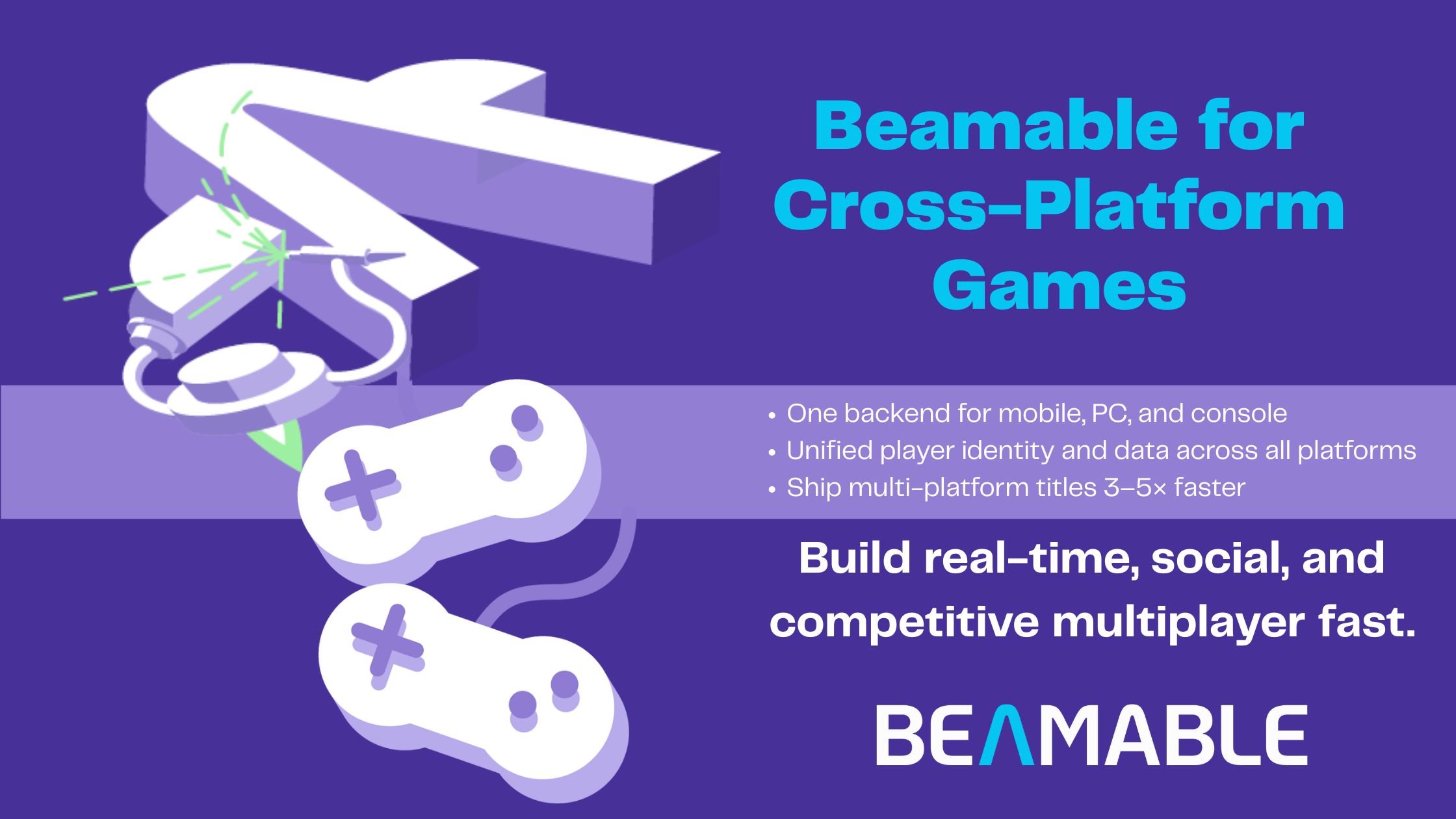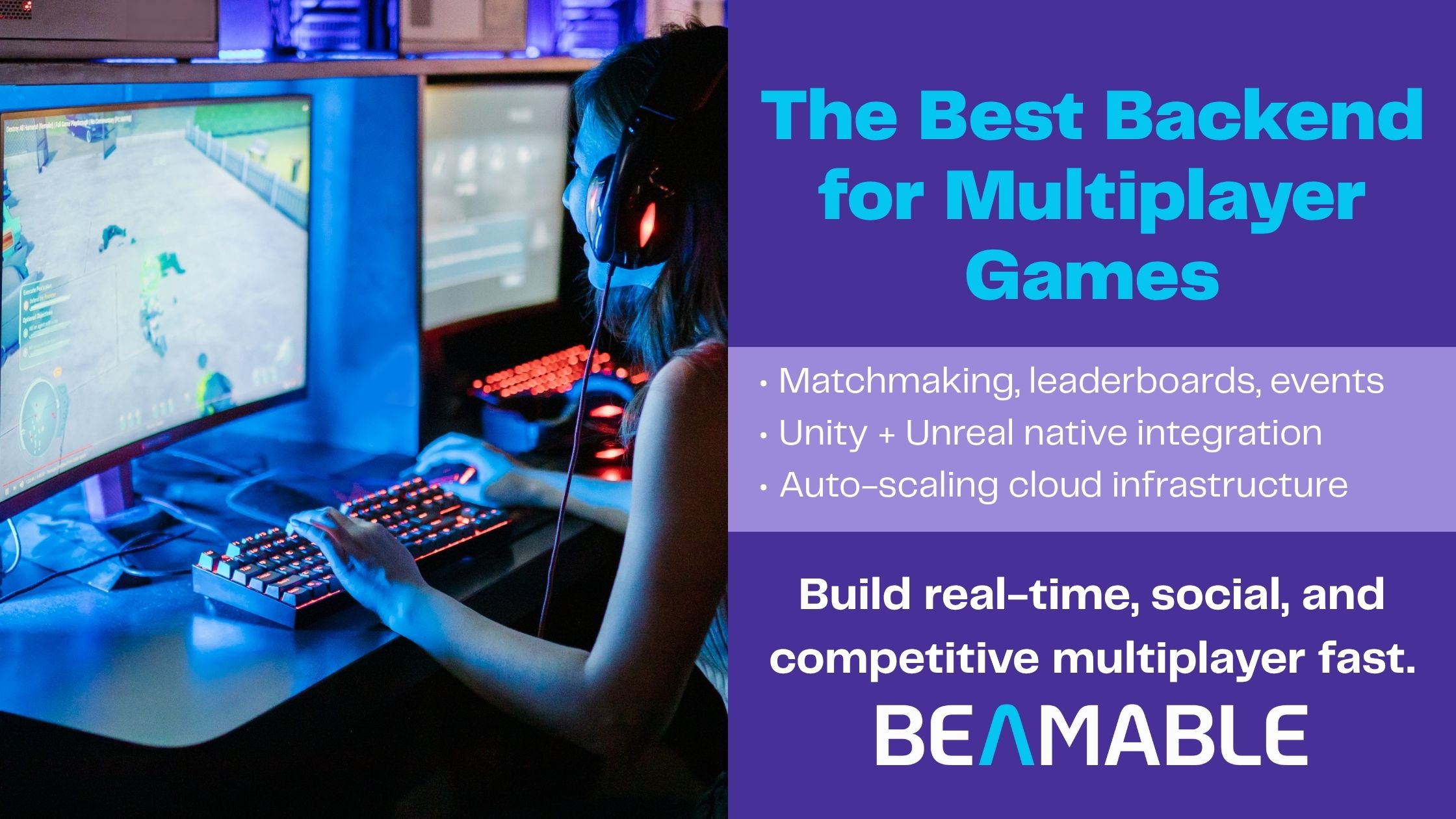How to Launch Games Faster with Beamable

How to Launch Games Faster with Beamable
The real challenge in game development isn’t building the game—it’s building the game efficiently.
Building efficiently means getting your game out into the world faster so you can generate revenue from your players and sustain the game and player experience for years to come.
The time it takes to develop a game ranges tremendously—anywhere from a few months for a simple game to five years for a more complex one. (Although, if you’re really good, you might be able to build a game in 15 minutes). But besides complexity and budget, what’s the biggest time factor?
How you build and launch it.
You could create everything from scratch—from the game engine and server infrastructure to the data design and content pipelines. But a better option is to streamline the process by taking advantage of a game development system that takes care of the development infrastructure for you.
Read on for three ways you can save time and get to profitability faster by launching your next game with Beamable.
1. Use Unity Frameworks and Prefabs
You want to spend as much time as possible on your core game loop and differentiating factors like story, character, world-building, and compelling gameplay mechanics. But the more time you spend worrying about DevOps, system integration, and server build-outs, the less time you’ll have to focus on your actual game.
Use a pre-developed architecture to avoid reinventing the wheel. Game development platforms like Beamable let you enjoy robust game server architecture without having to develop it from scratch. It saves you time on backend programming, server scaling, and live operations.
Drag-and-drop prefabs also save you time coding. Rather than building game elements from scratch, you can simply customize a template. For example, game economy prefabs, like inventory, stores, and virtual currency, allow you to quickly build a functional game economy for your users. These aren’t just easy to duplicate since they also make it easier to edit without causing a cascading effect throughout your game code, saving time on testing.
Create social systems that drive engagement and player retention to drive early growth and initial profitability. For example, in early versions of the game, enable groups or guilds, leaderboards, tournaments, in-game messaging, and time-limited events that build compelling engagement loops. The higher your retention, the faster the game will be financially sustainable.
2. Host and Update Games Live
Launching your game is just the beginning. After that, there are constant updates, optimizations, and adjustments you’ll need to make to stay relevant and increase engagement.
Live operations (LiveOps) are changes you can make to your game without having to release a new version. They can include changes to gameplay, design, or characters. By doing live updates, you don’t waste time taking your game offline to update it. LiveOps also lets you ship faster because you’ll know that you can make further changes and modifications as you go.
Save to the cloud. Cloud save automatically syncs player data to the cloud, so you don’t have to worry about servers crashing or losing data if a player’s wifi drops. It’s efficient because it helps keep data in sync even if there are server or player internet connection issues.
3. Learn About and Delight Players
There’s more to a game’s success than the game itself. There are analytics, sales, and customer feedback. Building your game efficiently means ensuring these are in place from day one so you can make informed product decisions and optimize revenue.
Implement analytics. Player usage data helps drive business insights and improve your game, which can save you time. Analytics equips you to make the right product decisions so you don’t waste time building the wrong features.
The fastest way to access this data is with the pre-built tools offered by a game development platform—things like frictionless player authentication and instrumentation. With one line of Beamable’s code, you’ll know everything your players are doing in the game—their sessions, spending, and usage statistics.
Include the commerce features that drive conversion and revenue. You might want to offer the basic in-app stores and player offers, but you can take your revenue to the next level by also providing segmented offers, timed offers, and a range of localized and customized A/B testing and trials. Including these from the beginning reduces your time to profitability.
All of these features come out of the box with Beamable. Our system comes stocked with full web-based tools to manage in-app sales, host a calendar of events, create engaged communities around your game, and perform critical player support.
Drive Success with Efficient Development
The best games take time to develop—there’s no way around that. But there are ways to work smarter and faster. You get to choose: do you build the in-game chat functionality yourself? Or do you simply use a template and customize the look and feel?
Beamable can help you launch a compelling and revenue-generating game by giving you access to a rapid workflow. It offers a Unity framework with pre-designed game modules to save time during development and gives you LiveOps tools to quickly update games and keep users engaged. You’ll also get the business intelligence tools you need to optimize your game to consistently delight players.
The efficiency pays off. Game studios using Beamable have reduced their required team by up to 5 people just through DevOps and LiveOps tool efficiency. Plus, a Beamable implementation can be fast—it can take only 2-3 months to create your entire game server backend.
Sign up for Beamable today to build better games faster.




